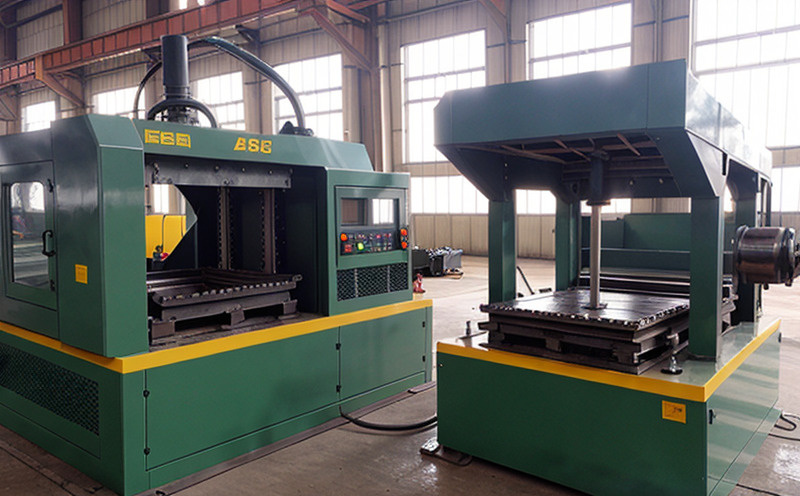EN 10228 Ultrasonic Testing of Forged Components
The EN 10228 standard provides a comprehensive framework for the ultrasonic testing (UT) of forged components used in industrial manufacturing and processing. This method is crucial for ensuring product quality, safety, and reliability by detecting internal defects such as cracks, voids, and inclusions that can compromise structural integrity.
Forged components are widely employed across various industries due to their excellent mechanical properties. Ultrasonic testing, specifically conforming to EN 10228, is a non-destructive technique that allows for the inspection of these components without altering or damaging them. The standard specifies detailed procedures and criteria to ensure consistent and reliable test results.
The process involves the use of ultrasonic waves that are transmitted into the component through a probe. These waves reflect back from internal defects, providing insights into their size, shape, and location. This method is particularly effective for detecting flaws within complex geometries where other testing methods may be less suitable or impractical.
EN 10228 emphasizes the importance of proper specimen preparation to ensure accurate test results. Specimens must be cleaned and degreased before testing to eliminate any external interference. The standard also outlines the requirements for the ultrasonic equipment, including frequency range, coupling agent, and probe selection. Calibration and qualification of the equipment are critical steps that must be strictly adhered to.
Accurate reporting is another key aspect highlighted in EN 10228. Results should include detailed information about the test setup, calibration procedures, any anomalies detected, and the final assessment of the component's suitability for its intended use. This ensures transparency and traceability, which are essential for meeting regulatory requirements and maintaining quality standards.
Understanding the nuances of EN 10228 is vital for industries that rely heavily on forged components. By adhering to this standard, manufacturers can enhance product reliability and reduce the risk of failures in critical applications such as aerospace, automotive, and heavy machinery sectors.
Applied Standards
| Standard Code | Description | Date Adopted |
|---|---|---|
| EN 10228-1 | UT of Forged Components - Part 1: General Requirements and Guidelines | January 1, 2007 |
| EN 10228-2 | UT of Forged Components - Part 2: Specific Requirements for Certain Types of Forgings | January 1, 2009 |
Scope and Methodology
The scope of EN 10228 covers the ultrasonic testing of various forged components used in industrial manufacturing. This includes but is not limited to gears, shafts, hubs, and other structural parts that undergo significant stress during operation.
According to EN 10228-1, the general requirements outline the conditions under which UT should be performed. These include the selection of appropriate equipment based on the component's thickness and material properties. The methodology described in this part also emphasizes the importance of proper calibration and qualification of the ultrasonic testing system.
EN 10228-2 provides specific requirements for certain types of forgings, taking into account their unique characteristics and potential defects. This ensures that the testing process is tailored to each component type, thereby enhancing its effectiveness and reliability.
The methodology involves several key steps:
- Preparation of the specimen
- Application of coupling agent
- Emitting ultrasonic waves into the component
- Capturing and analyzing reflected signals
Accurate interpretation of these signals is critical for determining the presence and extent of defects. The results are then documented in a report that includes all relevant details, ensuring compliance with regulatory requirements.
Why Choose This Test
EN 10228 ensures consistent and reliable test results by providing detailed guidelines for specimen preparation, equipment calibration, and testing procedures. This standardization minimizes variability in testing outcomes.
The ultrasonic testing method is non-destructive, allowing for repeated inspections without affecting the component's integrity. This makes it ideal for critical applications where downtime must be minimized.
Ultrasonic testing with EN 10228 helps to identify internal defects that might otherwise go undetected through visual inspection alone. This early detection is crucial for preventing failures in high-stress environments, thereby enhancing the safety and reliability of industrial processes.





